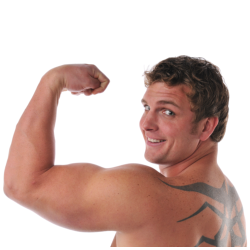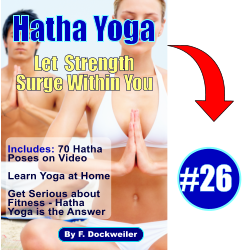Benefits of Fitness Rope Training
The biggest benefit to rope training is to increase your strength, improve your endurance and your power. You will find that after training with heavy ropes you will be quicker, stronger and more agile. Which is one of the reasons why is that when pro athletes use this form of training they notice a huge difference when it comes to game time!
The other huge benefit of rope training is that you will notice a difference in your aerobic capacity. Rope training incorporates cardiovascular training with high intensity training by combing intense short sessions which are repeated several times. This is a great exercise to help improve your lungs ability to take in more air. If you have lung problems consult with a doctor before attempting this type of exercise and get their advice on how best to start off.
Fitness rope training is a full body workout and incorporates your entire trunk. There is no need to have to perform more exercises afterwards. It really is one piece of equipment that targets your whole body from head to toe.
As well rope training is just plain fun, it is the perfect exercise to take up if you are bored with your regular routine. Training with ropes is perfect for beginners to pro athletes and for anyone regardless of age. It is simply a matter of adjusting the length and weight of the rope to suit each person. This makes rope training perfect for a family fun filled exercise routine.
The nice thing about this type of training is that you can adapt it to suit your needs. If you have trouble standing you can easily kneel down or sit on a stability ball. For more advanced moves try squatting or lunging as you control the ropes. Plus don’t forget that you can use your heavy rope for climbing or pulling movements.
Fitness Rope Choices
When buying a fitness rope you want to take a few things into consideration. There is more to buying a rope than meets the eye and first off you need to realize that there are different types of rope.
- One of the best rope choices is one made from premium double braided nylon. With a double braided rope you essentially have two ropes in one, with one being braided over the top of the other. This type of rope is very strong, durable and soft and comfortable on your hands. They are a nice heavy rope that will not shed making them great for indoor or outdoor use. The only downside to this type of rope is its price. They tend to be on the expensive side but don’t forget they will last for many years.
- The Manila rope is probably the one that you are more familiar with. This type of rope resembles the ropes you would have used at school! A Manila rope is a tough rope that is great for taking the kind of abuse rope training can place on it. This type of rope is also more affordable making it the number one reason why many people start off with this one. It is important to note that a Manila rope may tend to shed and is recommended for using outside and it can be a little rough on your hands. Take these points into consideration before making your final buying decision.
- A middle of the road rope would be one that is made from polyester and polypropylene fibers. This type of rope is very strong and durable. It is also much softer than a Manila rope and does not shed so can be used both indoors and outside. Ropes made from polyester tend to be lighter making them a good choice for beginners, seniors and children. Price wise they are right in the middle between the cheaper Manila ropes and the more expensive double braided ropes.
If you purchase a rope specifically made for rope training then it will normally have handles or covered ends on it. If you purchase a length of rope from your hardware store it will have rough edges on the ends. If you know what you are doing, the polyester and nylon ropes can be cut clean on the end and then sealed with a flame. A simple knot at the end will also stop your rope from fraying loose.
When selecting your rope try to pick a rope that is not too heavy for you but one that still has a thickness of 1.5 to 2 inches. The most popular length is 50 feet but 25 foot ropes are still long enough for you to get a great workout with. Some people prefer to purchase a longer length of rope and then tie knots in it. As your ability increases you can easily make the rope longer by untying the knots. As length increases, so does the intensity of strength to move it.
Fitness Rope Training Summary
Rope training goes by many names and you may see this type of training advertised as:
- Undulating training
- Power training
- Battle Rope training
- Rope training exercises
- Fitness ropes
Just remember that they all mean the same thing and would possibly have exercises with different names. Whether you are looking for something to add to your exercise routine or are just in the mood to try something new rope training may be your perfect choice. Your only cost is that of the length and type of rope and you are ready to go.
It is quite easy to find videos online that will instruct you on the basic movements of rope training exercises. Or you can purchase rope training DVD’s where you can follow along.You can train by yourself, with a partner or make it a family activity.
Heck you can even invite your neighbors over and have a friendly tug of war game in your backyard. But, hint, hint, do it after you’ve done your rope training for two to three months first so that you’re ready to kick-butt and impress.
To help you get started right, be sure to read the article titled “Rope Training – for Fitness Nuts and Newbie’s Alike” found at http://myfitnessnut.com/rope-training-for-fitness to give you other important details not found in the article above.
Also to get a jump start on bodybuilding, go to http://MyFitnessNut.com and get a free subscription of the My Fitness Nut Newsletter for up to date tips and bodybuilding resources that the whole family can use to get fit and stay fit for life.









